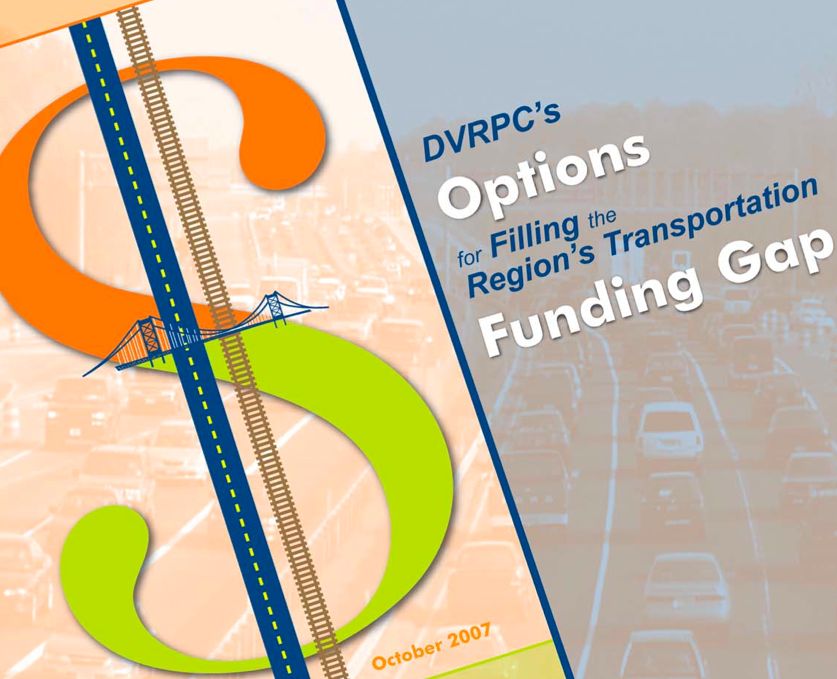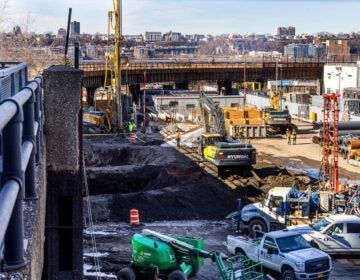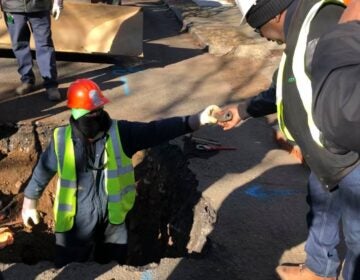Feeling the domino effects I-80 tolling no-go has on Act 44

When Gov. Rendell convenes the state legislature for a special session later this month designed to fix the state’s infrastructure funding problem, lawmakers will have their hands full.
The collapse of the Interstate 80 tolling effort represents a serious blow to the state’s plan to reinvigorate funding for much needed road and bridge repairs and mass transit operations. As it stands Pennsylvania could lose $472 million this year, with the number growing in subsequent years.
For SEPTA, that means indefinitely postponing the new smart card fare system, reconstruction of the City Hall station and needed infrastructure investments like finding replacements for aging regional rail power substations. (http://planphilly.com/septa-seeking-fare-hike).
Act 44, the state law that provides transportation subsidies, relied on federal approval to toll Interstate 80. Federal officials rejected Pennsylvania’s request to do that earlier this month, saying federal law prohibited Pennsylvania from using money it would get from the tolls to help maintain other roads.
Though Rendell and legislative leaders have said they are committed to plugging the hole in transportation funding, they only have until the end of June before the cuts start hitting public transit systems and road construction programs all over the state.
As state Rep. Joe Markosek said, the I-80 tolling plan was Plan B, and it will be difficult to find something else that’s politically palatable in this short period of time — especially given an impending election and the difficulty of raising taxes during a recession.
While Rendell has talked about reviving his original funding strategy, which involved leasing the Pennsylvania Turnpike to a private operator, it’s unclear how the recession has changed the market and whether the state could get enough money from a lease to plug the funding hole.
At the same time, Steve Wray, executive director of the Economy League of Greater Philadelphia, which pushed hard for the adoption of Act 44, is afraid that any new funding solution could alter the law’s funding formulas — in essence, sacrificing money earmarked for SEPTA and other transit systems and using it for highway and bridge repairs.
Wray also admitted that none of the remaining funding options are “overly attractive.”
Though the state could fund the gap by raising tolls on the Turnpike, tolls are already slated to go up under Act 44, and Wray said that further tolls would place a “disproportionate burden” on the southern part of the state, while northern Pennsylvania roads remain untolled.
Any single new tax or fee may have trouble generating enough revenue on its own. The Delaware Valley Regional Planning Commission released a study examining an array of regional transportation funding options that illustrates the problem. Doubling the state’s tire tax, for instance, will only generate about $6 million a year.
At the same time, out-of-the-box thinking, like a vehicle miles-traveled tax or a vehicle property tax, could generate significant revenue.
For his part, Peter Javsicas of PenTrans, a state transit advocacy group, would like to see fees for large trip generators, like big box stores.
That, he argued, would make businesses that generate congestion pay their fair share for maintaining roads and could spur transit-oriented development.
The question is whether there’s enough time to figure out how to implement or generate the political will to support a new taxing scheme.
Don Shanis, the DVRPC’s deputy executive director, doesn’t think so. He’s pessimistic about the chances of adopting a new funding source quickly, especially in an election year.
And many of the ideas that have been floated — a state representative from Allegheny County wants to legalize and tax video poker in bars (http://www.post-gazette.com/pg/10104/1050338-100.stm) and Rendell wants to tax oil company profits — won’t do much, if anything, to promote denser development.
Shanis does see hope in a proposal (http://www.post-gazette.com/pg/10102/1049699-454.stm) floated by state Rep. Rick Geist, the ranking Republican on the House Transportation Committee.
Geist wants to use money from the state’s Motor License Fund, which is fueled by vehicle fees and gas taxes, to repair roads and bridges. Currently, it funds the state police.
Geist also wants the state to seek federal permission to toll the portion of Interstate 95 that runs through Southeastern Pennsylvania and use that money to repair the road — which represents one of the region’s most pressing infrastructure priorities. And he’s argued that the tolls wouldn’t run afoul of federal law like the I-80 tolling plan did because the money raised from them would be funneled back into the highway.
At the same time, Geist wants to encourage the Delaware Valley and other regions in the state to provide more funding to their regional transit agencies — the state now provides 85 percent of public transit subsidies, and he wants to bring that level down to 75 percent while giving regions new powers to levy local taxes. States contribute 65 percent of transit subsides on average.
Though a regional sales tax of just 0.26 percent could bring in $144 million annually to the region, according to the DVRPC study, enacting a Delaware Valley-wide taxing structure would require a new level of cooperation between Philadelphia and the four suburban counties.
Mayor Nutter has managed to bridge some of the traditional city-suburb divide since his election, and Rina Cutler, the city’s deputy mayor for transportation and public utilities, said in an earlier interview with PlanPhilly (http://planphilly.com/rina-cutler-aims-keep-it-real) that she supported looking at regional funding solutions.
At the same time, she indicated that a move toward that was still years away. Shanis agreed. Though he sees hope in intra-county fees for transit — Montgomery County wants to fund the planned R6 Norristown extension by tolling Route 422 — he doesn’t see support for any kind of five-county tax.
Other states that have used regional taxes to fund transportation systems, like Colorado, have also used money to build new lines and increase service, not maintain existing infrastructure.
At the same time, Shanis said, Geist’s proposal to extend the Turnpike’s borrowing authority under Act 44 three more years — which would maintain planned funding for mass transit while a longer-term solution can be found — may not provide the funding security essential to long-term capital planning.
Besides providing an increase in state funds to transit, Act 44 also gave transit agencies crucial long-term funding stability. They could feel free to plan multi-year projects, like SEPTA’s smart card system or renovation of the City Hall station, because they could expect money to pay for it to be available in the future.
SEPTA spokesman Andrew Busch also stressed the importance of a dedicated, long-term funding source. Though SEPTA isn’t endorsing any specific funding framework and it won’t turn money away, it doesn’t want to start on long-term projects without a guarantee of the money needed to complete them.
It’s not yet clear which of these options, if any, the legislature will adopt — or whether lawmakers will pull a new rabbit out of their hat before the special session.
Contact the reporter at campisi.anthony@gmail.com
WHYY is your source for fact-based, in-depth journalism and information. As a nonprofit organization, we rely on financial support from readers like you. Please give today.






